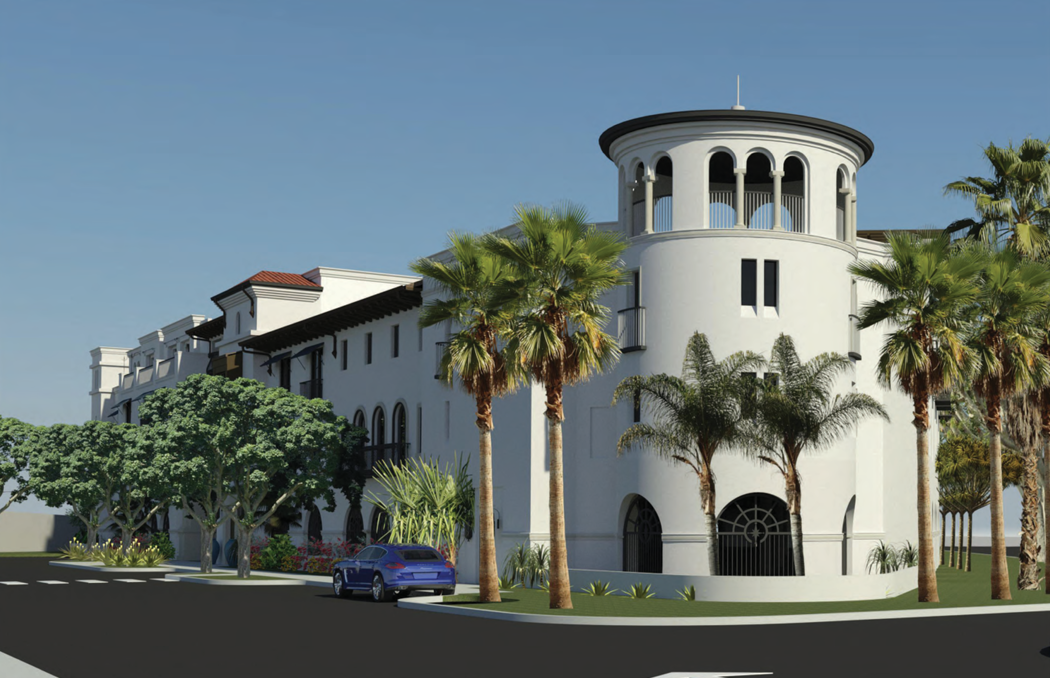REPORT FROM THE U.S.—Despite worries about the potential end of the lodging cycle and a wave of CMBS loans in need of refinancing potentially clogging up the pipeline, lenders and owners alike said the environment for senior lending is healthy right now in terms of both availability and pricing.
But at the same time, mounting concerns over continued supply growth, especially in some downtrodden oil-markets, are making the world of construction lending considerably more difficult.
Peter Berk, founder and president of PMZ Realty Capital, said he sees “a lot of demand on the investor side,” which has pushed down the cost of financing for existing assets.
“Putting aside construction, there is a ton of money chasing too few deals,” he said. “Any reasonable deal is getting multiple offers. There are not enough deals to go around for that money. People are (in) competition and bringing pricing down.”
“Some lenders can’t get enough fixed rate, so they’ve switched to floating rate,” Berk said. “In the last 60 to 90 days, a lot of new players entered the floating rate market, and that’s driven rates down. It’s now a good 100 basis points lower.”He noted rates for permanent loans have decreased roughly 50 basis points over the past eight months, and some lenders are becoming more flexible to make sure they get their capital out.
Matthew Mitchell, SVP of Hall Structured Finance, said his company, which works in the construction lending space, is dealing with the exact opposite reality.
Lenders are “underwriting more conservatively right now, and that’s due mostly to the consensus of where the cycle is,” he said. “Most people think we’re late in the hotel and general economic cycle, and that’s driving some conservatism, and you’re seeing reduced capital and lending options.”
Competition for deals
There are plenty of things fueling anxiety in the hotel industry right now, not the least of which is ongoing speculation about when the industry might be approaching the end of its cycle. But that doesn’t seem to have been enough to curb lenders’ appetites.
Ed Ansbro, managing director of Fairwood Capital, said he’s still seeing money available for the types of projects he wants to do.
Ansbro said Fairwood focuses primarily on “buying existing assets that have a story.” His company largely stays away from CMBS financing, he said, but focuses more on bank debt with flexibility on prepaying and focuses on leverage in the 55% to 60% range.
“That kind of money is still out there, and pricing has backed up a little bit on that stuff,” he said. “We’re out in the market now looking at a couple of things and getting a lot of interest. And because we’re low-levered, that certainly helps.”
Ross Greenman, general counsel and VP of business development at Vista Investments, said his company just closed on some CMBS financing. He said the type of assets his company targets—existing assets within high-barrier-to-entry markets in California—are still getting strong interest from lenders.
“CMBS is strong right now; there seems to be a lot of appetite,” he said. “I think, in general, CMBS lenders are more aggressive in their underwriting … but some good local banks and regional players are also making capital available. In general, we see better proceeds from CMBS.”
He said worries over a so-called CMBS wall, when a wave of loans were set to come due all at once that could clog the market, seems to have been overblown and has not affected availability from his perspective.
Greenman said he finds the conversation about where the hotel industry sits in its overall cycle interesting, given many are expecting a soft landing and some are even speculating that the industry is in the early days of a new cycle. But cycle dynamics haven’t seemed to hamper lender interest in stabilized properties.
“For acquisitions and refinancing, I think lenders seem to be saying that performance is going to continue,” he said. “Maybe they’re not underwriting a lot of major upside, but they’re underwriting things firing at such a good level that” they can still lend.
Worries over construction
Mitchell noted that conditions seem to be almost perfect for a company like his, which will typically lend at points competitors won’t but will charge developers a premium for that added availability. He noted Hall has a long line of potential deals lined up as the well is largely dry for construction money.
“We’re seeing good opportunities to lend out there because traditional banks are pulling back and (developers) are seeing less options right now,” Mitchell said.
To quantify the shift in the market, Mitchell noted that Hall has remained relatively stable in its pace the last few years, averaging just over $100 million in financing each year. By contrast, the lender’s target for 2017 is more than $300 million.
Multiple sources said there are some regulatory issues that could keep banks on the sideline, but overall the capital markets still seem healthy.
“We’re seeing more opportunities to lend to developers who maybe primarily work with relationship lenders or banks in the past,” Mitchell said. “Regulations have limited options, so developers have to seek alternatives.”
Ansbro noted that the issues with banks aren’t hotel-specific.
“Globally, they seem a little more bashful about commercial real estate, in general,” he said. “Basel III (banking reforms) are having an impact on them, especially with construction.”
Those regulations require banks to hold on to more capital, which reduces the incentive to use what they have remaining on commercial real estate loans, which typically have lower returns than some other asset classes.
Greenman said cycle anxiety and concerns over market-specific supply in particular are far bigger issues in the world of construction lending than with established assets.
“Lenders seem to be a little more conservative with construction lending and the amount of supply seen in certain markets,” he said. “That’s where they really look out to how those assets will be performing in three to five years.”
As Greenman noted, supply issues seem to be largely a market-by-market issue, but both Ansbro and Mitchell said they wouldn’t shy away from a market that might seem down if an individual asset within a submarket or neighborhood still seems to make sense.
The power of brand
Brand choice still seems to have an impact on procuring financing, sources said. Multiple sources agreed that the market seems to have an affinity for Marriott International- and Hilton-branded properties, but Greenman said there is still room to get deals done with other flags.
“If you’re going to a lender with a Hilton or Marriott product, that’s always going to be good,” he said. “But we own Best Westerns and haven’t had any issues with the Best Western flag from a capital-market standpoint.”
He said any discussion about a brand also has to include an analysis of the market the asset will sit in, but he’s confident there are many viable options for a flag.
“I think Hyatt and to a lesser extent IHG should be in the conversation,” Greenman said. “And on the construction side, Choice is getting a lot of Cambrias in the ground, and obviously lenders are facilitating that. There may be a hit on terminal value, but if it pencils, lenders are still going to lend.”
Mitchell said he’s not shocked that Hilton and Marriott hotels make up the lion’s share of the pipeline, because lenders like Hall largely have a higher level of comfort with their brands, particularly when it comes to select service.
“They’re a little easier to underwrite, and in general, lenders including ourselves can be a little more aggressive in what we do there, whereas with unflagged or other brands we might be a little more conservative,” he said.
But he noted there are many projects that work better as independent or boutique properties or with brands outside the Marriott and Hilton families.
“There are a lot of other good flags out there,” Mitchell said. “There is a place for boutique and unflagged properties, and we’re a fan (of those projects). A Hilton or Marriott flag is not right for every project.”
View full story here.










